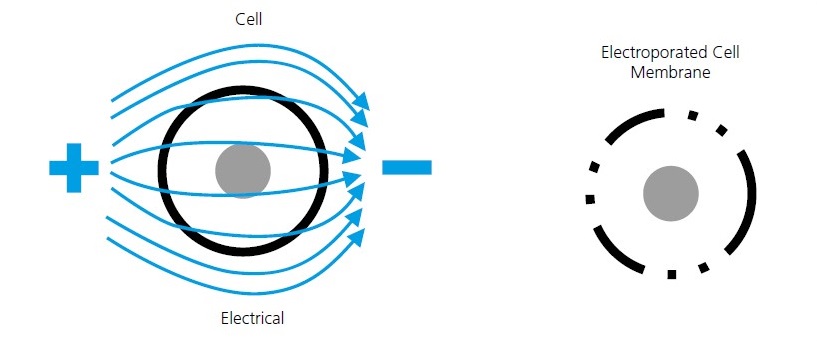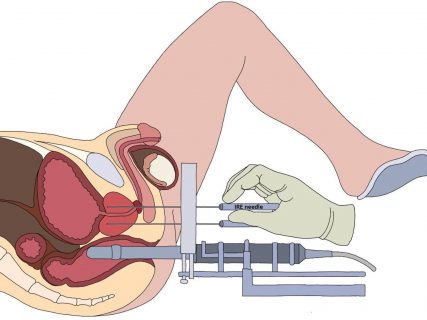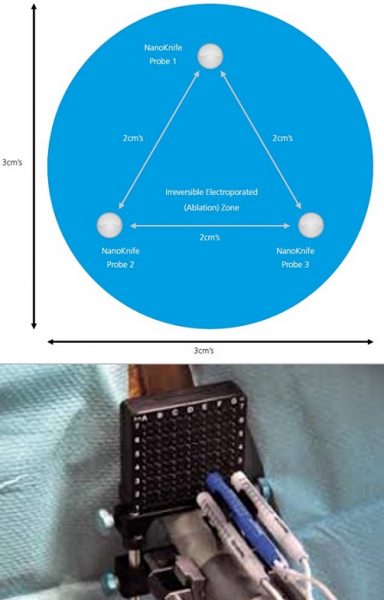Optional Treatments
Treatments > Optional Treatments > The other energies > IRE
IRE
IRE stands for Irreversible Electroporation based on the Nanoknife® technology. It simply uses electricity to disrupt the membrane of the targeted cells and induces cell death (picture 69).
Technique
As for Prostate Photodynamic Therapy or Cryotherapy, the patient is in lithotomy position under general anesthesia with an ultrasound (US) probe placed intrarectally. Three to four needles-like electrodes are inserted through the perineum under US-guided vision in triangulation to generate the electrical field (picture 70). To create the electroporated ablation the distance between 2 needles has to be at least 1 cm and below 2 cm (picture 71). The electrical field necessary to the ablation is provided by a generator. For each pair of electrodes a software calculates the voltage needed. In total 90 pulses of 70 microseconds are delivered to the prostate with a direct current between 20 to 50 amps.
Few precautions are necessary to proceed as IRE induces muscle contractions that require medical paralysis for the procedure and a risk of cardiac arrhythmia that requires cardiac synchronization.

Picture 69 : Disruption of the cell membrane by electroporation (adapted from Tsong TY. Biophys J 1991)

Picture 70 : Sagittal view of the IRE installation and needle-like electrodes placement (by B. Batard)

Picture 71 : Placement of the needle-like electrodes according to the triangulation method
Indications/Guidelines
IRE is amongst the newest technology available with small-size population evaluated on few prospective studies with short follow-up. Most of the patients treated were either Low Risk (LR) or Intermediate Risk (IR). However in some studies selected High Risk patients have been treated by IRE.
Results
As previously mentionned most of the studies conducted are small-size population with a short follow-up. It has been to be considered more as preliminary results. The negativation of the biopsies at 1 year was around 80% and the PSA dropped of 75% of its initial value. The tolerance of the treatment was good with the conservation of erectile function in 80% and incontinence for 4% of the patients [35, 36].


